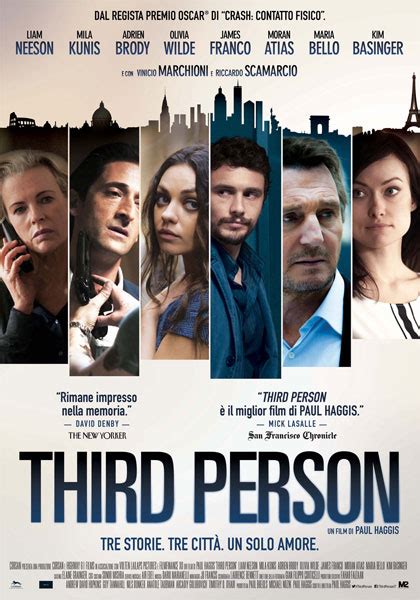The art of storytelling through film has evolved significantly over the years, with various narrative techniques being employed to engage audiences and convey complex ideas. One such technique is the use of third-person perspective in filmmaking, which has become a staple in the industry. This approach allows the audience to observe the characters and their actions from an external viewpoint, creating a sense of detachment and objectivity.
In third-person film, the camera is positioned outside the characters, capturing their interactions and emotions from a neutral perspective. This enables the audience to form their own opinions and interpretations of the story, rather than being influenced by a character’s internal thoughts and feelings. The use of third-person perspective also allows for a greater emphasis on action, dialogue, and plot development, as the audience is able to see the characters’ actions and reactions in a more objective light.
One of the key benefits of third-person film is its ability to create a sense of realism and authenticity. By observing the characters from an external perspective, the audience is able to see the world of the story in a more nuanced and detailed way. This can be particularly effective in genres such as drama and thriller, where the audience needs to be fully immersed in the story to become invested in the characters and their plight.
The use of third-person perspective in film has also enabled filmmakers to experiment with innovative narrative techniques, such as non-linear storytelling and multiple plot threads. By jumping between different characters and storylines, the audience is able to piece together the larger narrative, creating a sense of complexity and depth. This approach has been particularly effective in films such as “Pulp Fiction” and “Memento,” which use non-linear storytelling to create a sense of mystery and intrigue.
However, the use of third-person perspective in film is not without its limitations. One of the main drawbacks is the potential for emotional detachment, as the audience may not be able to form a strong emotional connection with the characters. This can be particularly problematic in films that rely heavily on character development and emotional resonance, such as romantic dramas and character studies.
To mitigate this issue, filmmakers often use a range of techniques to create a sense of emotional intimacy and connection with the characters. One approach is to use close-ups and point-of-view shots, which allow the audience to see the world from the character’s perspective. This can create a sense of immediacy and intimacy, drawing the audience into the character’s emotional experience.
Another technique is to use voiceovers and internal monologues, which provide insight into the character’s thoughts and feelings. This can be particularly effective in films that use a non-linear narrative structure, as it allows the audience to understand the character’s motivations and backstory. However, over-reliance on voiceovers and internal monologues can also create a sense of distance and detachment, as the audience is no longer able to infer the character’s emotions and thoughts through their actions and dialogue.
In addition to these techniques, filmmakers also use a range of visual and audio elements to create a sense of emotional connection with the characters. This can include the use of music, lighting, and camera angles, which can all contribute to a sense of mood and atmosphere. By carefully balancing these elements, filmmakers can create a sense of emotional resonance and connection with the characters, even when using a third-person perspective.
The use of third-person perspective in film is a powerful technique that allows filmmakers to create a sense of detachment and objectivity. By observing the characters from an external viewpoint, the audience is able to form their own opinions and interpretations of the story, creating a sense of complexity and depth.
In conclusion, the use of third-person perspective in film is a versatile and effective technique that can be used to create a range of narrative effects. From creating a sense of realism and authenticity to experimenting with innovative narrative techniques, third-person film has become a staple of modern storytelling. While it may have its limitations, filmmakers can use a range of techniques to create a sense of emotional intimacy and connection with the characters, drawing the audience into the world of the story.
What is third-person perspective in film?
+Third-person perspective in film refers to the technique of observing characters and their actions from an external viewpoint, creating a sense of detachment and objectivity.
What are the benefits of using third-person perspective in film?
+The benefits of using third-person perspective in film include creating a sense of realism and authenticity, allowing for innovative narrative techniques, and enabling the audience to form their own opinions and interpretations of the story.
What are the limitations of using third-person perspective in film?
+The limitations of using third-person perspective in film include the potential for emotional detachment, as the audience may not be able to form a strong emotional connection with the characters.
The use of third-person perspective in film is a complex and multifaceted technique that can be used to create a range of narrative effects. By understanding the benefits and limitations of this approach, filmmakers can use it to create innovative and engaging stories that draw the audience into the world of the film. Whether used to create a sense of realism and authenticity or to experiment with non-linear narrative structures, third-person film has become a powerful tool in the world of storytelling.



